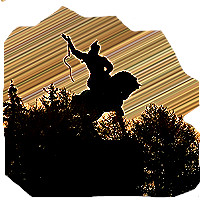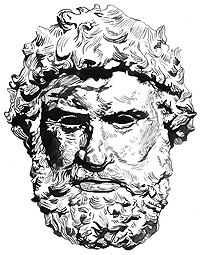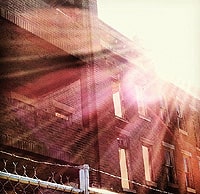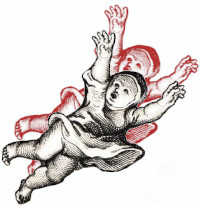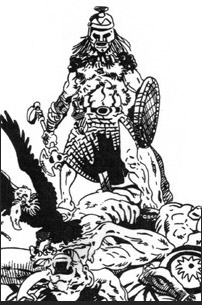In reviewing the works of Robert E. Howard, it soon becomes clear that his best developed setting and best developed character are to be found in his Conan stories, this despite the fact that the public perception of the Conan stories is one of shallow action adventure. The place to see the evolution of the Conan character are in the first 13 stories in his saga reprinted in The Coming of Conan the Cimmerian by Del Rey. After reading the three Del Rey volumes and returning to the first volume, this reader was struck by the fact that the latter Conan stories were increasingly written with strong female characters and from a female perspective, with Beyond the Black River being a notable exception. I had once reviewed a number of Conan stories with VJ Waks, who became too busy writing movie scripts to continue with the project. I wanted a female opinion on this character in light of the fact that this series of stories is typically dismissed by literary critics for lack of a female perspective and realistic female characters, which is not the case. Simply the hyper-masculine nature of the Conan character is repellent to the modern mind, which is dominated by the feminist viewpoint.
Last year, I found it quite interesting that my editor, a woman with a traditional European worldview, was endlessly entertained by the Robert E. Howard stories, especially the Conan stories. Any time I suggest to Danica that we read a Conan story, her eyes light up. Then recalling that I’m not tall, built like a tiger, bronzed by the sun, nor no longer have my long, unruly hair, I point her at an illustrated Del Rey volume of Conan stories. So, I have enlisted Danica to update my reviews of the Conan stories. Despite the fact that most of my readers would accuse me of making this decision based on the fact that she looks like one of Conan’s slave girls, illustrated by Mark Schultz in the The Coming of Conan the Cimmerian—somewhere between Yasmela and Sancha—I have instead enlisted the lady’s assistance purely out of my sense of scholarly devotion to the literary arts. Danica has graciously agreed to assist in this project, as she is editing the series, A Well of Heroes, and the most complete intertwining of Howard’s themes are to be found in the Conan stories, and because she does not mind being referred to as “Wench,” so long as the attribution is made while reading, discussing or reviewing a Robert E. Howard story. And, she enjoys the illustrations of Conan as much as I do the slave girl illustrations.
Even when he’s drunk and dictating to me, he still talks to me like I’m a dumb bitch. Oh, and he uses this term most affectionately. -DL
The first 13 Conan stories show a perspective shift that seems to lead to the later, longer stories at the end of the cycle:
The first five stories: The Phoenix on the Sword, The Frost Giant’s Daughter, The God in the Bowl, The Tower of the Elephant, and the Scarlett Citadel, are pure bachelor tales from a strictly masculine perspective with no female supporting characters—pure warrior tales. In five stories, the only named female character is the goddess he tries to rape in The Frost Giant’s Daughter.
In the sixth story, Queen of the Black Coast, the most popular Conan story among today’s generation which has received much attention in graphic novels, Conan is a supporting actor in his own story as his love interest, Belit, dominates the narrative.
With the seventh and eighth stories, Black Colossus, and Iron Shadows in the Moon, we get to see Conan from the female perspective. At this point, it is this author’s opinion that Robert E. Howard had so thoroughly established the Conan character as the masculine standard, that he’s giving the readers a varied view of his creation. In this way, he came across a powerful tool for presenting this hyper-masculine warrior from the point of view of two civilized women of the upper class.
In the ninth story, Xuthal of the Dusk, Conan is finally in what this reader believes is his proper narrative place, as a dominant warrior, loyally served by a good-intentioned, well-curved and not irritatingly opinionated slave girl. This is Conan’s proper place, and accounts for his general presentation as a barbarian womanizer in the comic books of the seventies and eighties. My editor and collaborator has been directed to reread and commit to memory Xuthal of the Dusk.
Now, finally, on his Nth whiskey chased by beer, to put behind him the pain of his last fight, he occasionally slurs a word, but has slowed down enough that I have a chance of remembering what he dictates as I try to catch up with my typing. -DL
In the tenth story, The Pool of the Black One, we see Conan again from the female perspective, more importantly, we see him first from the female perspective, with the perspective character’s name being the first word in the story.
In the eleventh story, Rogues in the House, we have the most masculine of the bachelor adventure tales. Having walked the readers around his creation, Howard now gives us Conan from the point of view of an emasculated politician. This is the most powerful of the bachelor tales and is the one chosen by Jonathan Bowden for his speech on Robert E. Howard, because it addresses the definition of humanity. It is at this point in his stories that the Conan character is fully rounded, not chronologically but from all of the facets of his masculine persona.
In the twelfth tale, The Vale of Lost Women, we see Conan at a masculine high, from the point of view of a delicate, civilized girl who has just seen her brother castrated and tortured to death by the savage tribe that has taken her captive. At the low point of her life, Conan appears as a monstrous hope whom she cleaves to for dear life and for seeing vengeance enacted upon her brother’s murderers. Through Livia’s eyes, we get a comparison of his barbarian honor code versus the [un]civilized ethics that put her into this predicament in the first place. Although The Vale of Lost Women was not sold, it seems to have established in Howard’s mind the desirability of depicting this extreme character from a softer view point.
In the thirteenth Conan tale, The Devil in Iron, it seems that Howard develops the multi-viewpoint narrative that typifies the later stories. We begin with a primitive man encountering the same mystery that Conan will ultimately encounter in the story, which is a very nice way of laying the ground for a protagonist with this kind of prowess. Rather than Conan being faced with a mystery, the reader knows ahead of time that Conan is going to walk into a horrible, seemingly insurmountable situation. We get to see Conan from his own arrogant point of view and ultimately, from the point of view of a willful captive woman, Octavia, like a Livia on steroids. Octavia is the model for the women in the later Conan stories, including Valeria, who is something of the ultimate Conan chick that can fight.
For our reviews of these and the later Conan stories, we have begun with my earlier reviews, have then reread the story together, making notations in the margins and seeking Danica’s overall impression of the story from her feminine perspective. It appears that Howard developed a confidence in this character that permitted the insertion of increasingly strong female characters, which rounded the perspective and rather than erode the masculine persona, buttressed it.


